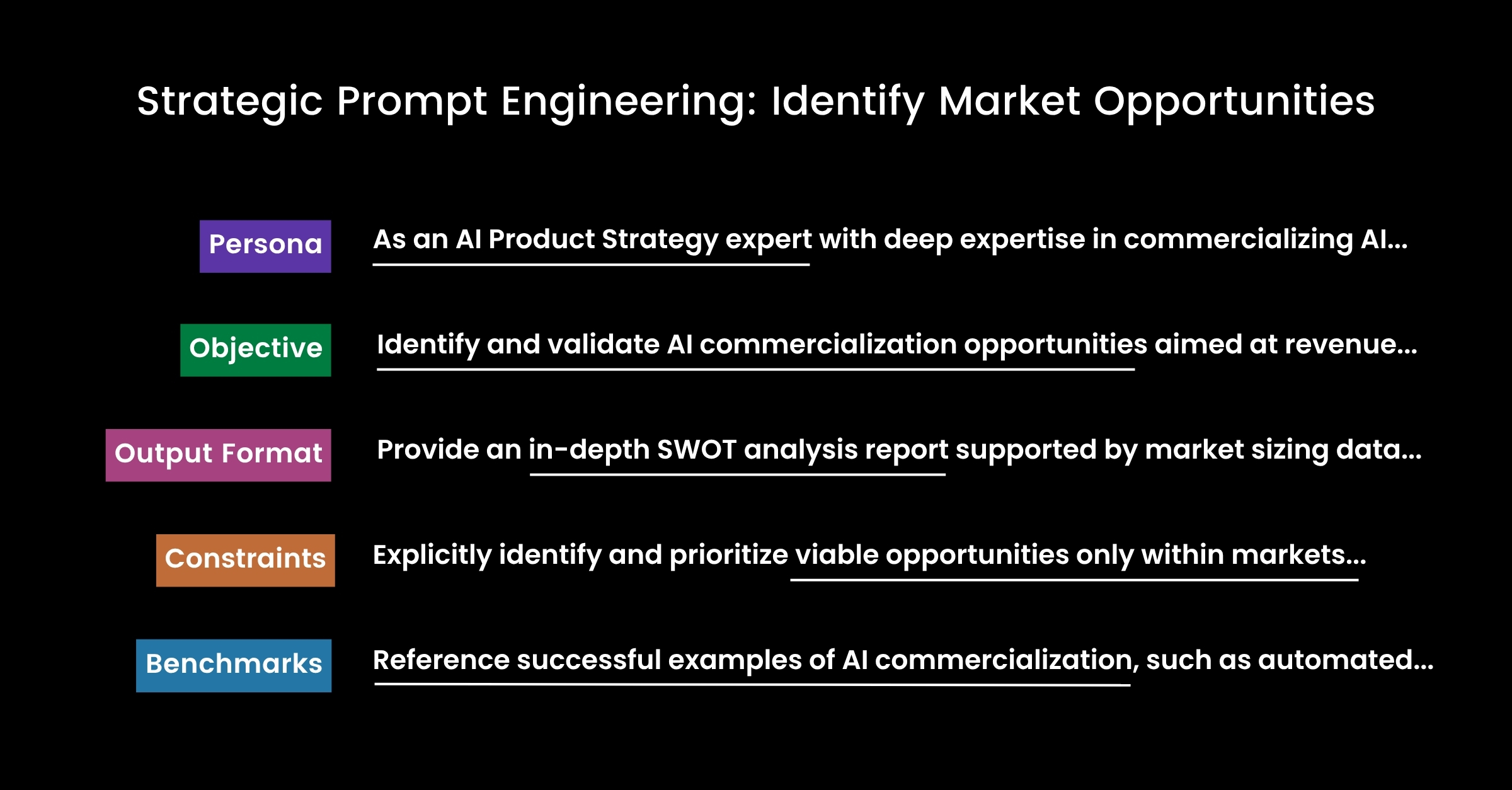As AI models rapidly evolve, we too must also evolve to proactively harness AI’s full strategic potential and maintain a competitive edge. Here is an actionable guide to leverage AI models with deep research capabilities and advanced prompt engineering techniques for achieving strategic insights.

Here is an actionable guide to leverage AI models with deep research capabilities and advanced prompt engineering techniques for achieving strategic insights.
Step 0: AI Model Selection
Choose an AI model optimized for your specific objective.
Example: OpenAI’s GPT-4.5 (Deep Research Mode) is ideal for comprehensive, deeply referenced market analysis.*
*Mistral AI and Cohere also offer models.
ⓘ Organize your prompt in the correct order for your chosen model: Persona → Objective →Output Format → Constraints → Benchmarks
Step 1: Persona Definition
Explicitly instruct the model to adopt a domain-specific expert persona.
Example: “As an AI Product Strategy expert with deep expertise in commercializing AI technologies within the Financial Services sector…”
Step 2: Objective Declaration
Clarify specific goals by explicitly stating your objective using clear, directive language.
Example: “Your objective is to thoroughly identify and validate AI commercialization opportunities aimed at driving revenue growth, capturing competitive market share, and/or enhancing operational efficiency.”
Step 3: Output Specification
Define exactly how the AI-generated insights should be formatted and structured.
Example: “Provide an in-depth SWOT analysis and report supported by rigorous market sizing, competitor insights, and direct quotations or citations from authoritative industry publications and respected business case studies. Cite your sources.”
Step 4: Constraint Definition
Set precise limitations to generate actionable, practical insights.
Example: “Explicitly identify and prioritize viable opportunities only within markets exceeding $100 million USD that are realistically deployable given [your company’s resources and constraints (e.g., budget, staffing)] within 12 to 18 months.”
Step 5: Benchmark Integration
Include references to successful prior implementations, business case studies, and/or industry benchmarks to ensure accuracy, relevance, and an objective evaluation.
Example: “Reference successful implementations, such as AI-driven fraud detection and claims automation, as benchmarks for the identified market opportunities to validate feasibility and quantify potential outcomes.”
By applying these advanced prompt engineering practices, you can swiftly identify and validate AI commercialization opportunities.


